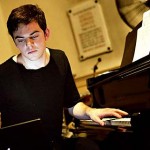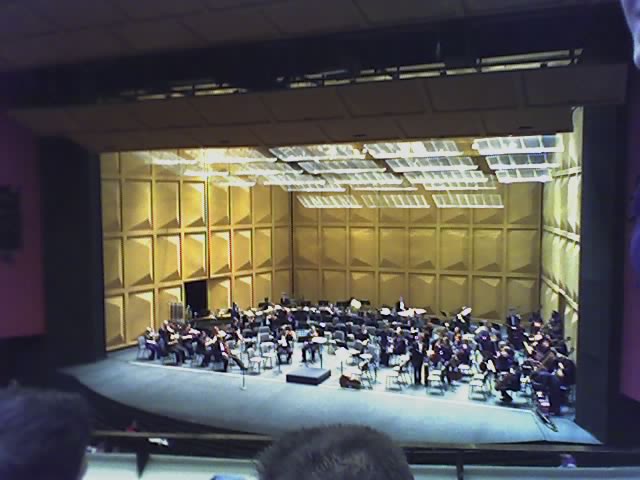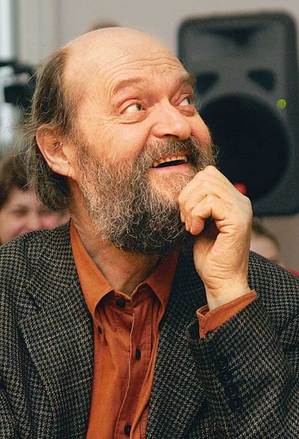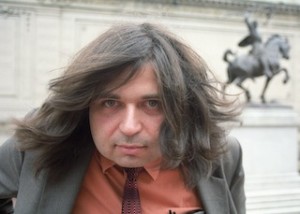Nico Muhly is set to appear at the Santa Monica Apple Store on the Third Street Promenade Wednesday, September 8th to mark two new releases from Decca. “A Good Understanding” will be released exclusively on iTunes on September 7, with physical copies available on September 21 alongside “I Drink the Air Before Me”.
Muhly along with Los Angeles Master Chorale conductor Grant Gershon will take part in a Q&A session – where Muhly will demonstrate how he creates his compositions with GarageBand on his MacBook Pro. The talk will end with a performance by members of the Los Angeles Master Chorale featuring two works from “A Good Understanding” and two related works, “Like as the Hart” and “Wayfaring Stranger”.
John Clare spoke with Muhly about the works and event: mp3 file
Nico Muhly and Los Angeles Master Chorale conductor Grant Gershon appear at the Santa Monica Apple Store on Wednesday, September 8, 7:00 p.m.
Bonus – listen to the rest of the conversation as Muhly interviews Clare: mp3 file
Poul Ruders has composed an opera based on Lars von Trier’s 2000 film Dancer in the Dark. The work will be premiered by the Royal Danish Opera next week (on 9/5). You can check out a teaser video below.
Dancer in the Dark is one of several recent operas based on films; but there are countless films yet to be adapted for the operatic stage. Which films would you like to see re-imagined as an opera?

Our friends at Q2 are featuring the work of Paola Prestini today. the festivities include Prestini commenting on featured tracks at the top of every hour and this nifty live cut (available for download on the Q2 site):
and this video:
[youtube]http://www.youtube.com/watch?v=r3DlPvXLU2k&feature=player_embedded#![/youtube]
[youtube]http://www.youtube.com/watch?v=R9BoplwcaaI&hd=1[/youtube]
Trills Flavia. (Music and Film by Jonathan Jindra. Dancer: Paola Georgudis. Girl in TV: Valentina Canastaro. Assisted by: Simon Pena)
Jonathan Jindra’s weekly experimental music concerts Binarium Sound Series continues 8pm Sunday nights here in Houston, Texas at The Mekong Underground, 2808 Milan Street (right next to Kohn’s bar). This is a wonderful series where you will hear intimate performances by local and visiting artists performing composed, improvised, electronic, and acoustic experimental music.
This Sunday’s August 29th Binarium program features Jonathan’s electronica project Trills. Trills is manifested in Jonathan’s live performances as well as several online digital releases – many being collaborations with other similarly minded artists. His recent full length split with Glasgow artist Dissolved entitled PH:14 has been his most successful release to date with over 43,000 downloads in its first month of release. Trills’ repertoire to my ears is rooted in the music of groundbreaking electronic artists like Tangerine Dream, Vangelis (especially his soundtrack to Bladerunner) and Popol Vuh.But Jonathan has name checked for me a handful of more contemporary artists as influences, including Boards of Canada, Pan Sonic, and Autechre.
I’ve listened to a bunch of Jonathan’s music and still feel like I’ve only scratched the surface of his talents and repertoire. And I don’t want to pigeonhole Trills with only a cursory familiarity of countless 21st century electronic artists that flood the web trading digital files of original groundbreaking music the way I traded cassette tapes of the same back in the day. The best thing to do is go to the Trills website and enjoy the music and video samples, and then forget what you’ve heard when you check out this Sunday’s show. Jonathan’s set will be accompanied by custom video projection. About This Product joins Trills on this bill.
The Prom concert on August 20, by The Philharmonia Orchestra and Esa-Pekka Salonen, began with The Foundry (1927) by Alexander Mosolov. This is a four minute bit of Russian avant-garde constructivism, portraying in the most realistic way possible with an orchestra…well, a foundry. It was first performed in Lenningrad in 1927 at a concert celebrating the tenth anniversary of the Revolution. The Foundry was originally intended to be the first of four movements or music for a ballet, which was never produced, to be called Steel. The other movements, which have been lost, were called ‘In Prison,’ ‘At the Ball,’ and ‘In the Street.’ It became celebrated and much performed in the US and Europe in its day. Henry Wood performed it on Proms concerts seven times between 1931 and 1940. It makes a hell of a jolly industrial racket; the best moments were the two times when the eight horn players stood and blared out a unison ‘tune’ over the general din, the second time to the accompaniment of one of the percussionists whacking away at a metal sheet.
 The concert of August 17, which began with the Pärt Cantus in Memoriam Benjamin Britten, included the first performance of Huw Watkins’ Violin Concerto, a BBC Proms commission, played by Alina Ibragimova, with the BBC Symphony, conducted by Edward Gardner. Watkins, who is a professor of composition at the Royal College of Music, is at least as well known as a pianist (and he is a formidable one) as he is a composer. In the composer portrait concert which preceded the Prom, he played his Four Inventions for piano, joined one group of students from the RCM in performing his Sad Steps for piano and string sextet, and conducted another group in a performance of Gig, a seven minute work for the same combination as the Ravel Introduction and Allegro.
The concert of August 17, which began with the Pärt Cantus in Memoriam Benjamin Britten, included the first performance of Huw Watkins’ Violin Concerto, a BBC Proms commission, played by Alina Ibragimova, with the BBC Symphony, conducted by Edward Gardner. Watkins, who is a professor of composition at the Royal College of Music, is at least as well known as a pianist (and he is a formidable one) as he is a composer. In the composer portrait concert which preceded the Prom, he played his Four Inventions for piano, joined one group of students from the RCM in performing his Sad Steps for piano and string sextet, and conducted another group in a performance of Gig, a seven minute work for the same combination as the Ravel Introduction and Allegro.
The Concerto starts with a sort of bang which generates a lot of energy. The soloist alternates playing agitated arpeggiated music which helps to contribute to the maintenance of this energy and longer lyrical lines which float on top of it. The first movement of the piece is the composing out of the gradual unwinding of the activity generated by its beginning, and finally unfolds itself into the second (the three movements are clearly meant to proceed without a break; it was unfortunate for its effect that the performers chose to make fairly long breaks between them), which is a gently rocking song-like piece. The third movement, not completely successfully, it seemed to me, was intended to regain the energy of the first and carry it further before ending once again with a quiet coda representing its final conclusive dissipation, making all three movements one span. The Concerto, like all of the pieces on the composer portrait, was tonal, with lucid harmony and transparent textures and was thoughtfully made and appealing. As an encore, Ms. Ibragimova, who is a champion of Watkins’s music, played the last movement of his Partita for solo violin, which is an attractive, energetic, and snappy piece.
 Friend, trumpeter, Co-Artistic Director of ANALOG arts and S21 pal Joseph Drew, today on his own ANABlog space shared a few more thoughts on the economic realities of today’s orchestra. Joe had already written some about this earlier this year, but was prompted to bring it up again after spotting a post by the Music Director of the Edmonton Symphony Orchestra, Bill Eddins, over at his own blog.
Friend, trumpeter, Co-Artistic Director of ANALOG arts and S21 pal Joseph Drew, today on his own ANABlog space shared a few more thoughts on the economic realities of today’s orchestra. Joe had already written some about this earlier this year, but was prompted to bring it up again after spotting a post by the Music Director of the Edmonton Symphony Orchestra, Bill Eddins, over at his own blog.
An excerpt from Joe:
Sounds like other folks are starting to wake up to the reality of the orchestral labor market. Last April, in response to the argument that salary cuts at major orchestras will prompt their members to flee to better-paying jobs, I argued: …where exactly are all these top-flight musicians going to go? To one of the other 17 full-time orchestras with a yawning budget deficit? The market for orchestral talent is hardly dynamic. There is far more supply than there is demand, and the dirty little secret is that the players aren’t what makes the orchestra great (see NY Phil: great players, underachieving ensemble). Buried in that BSO announcement last month is the fact that they are actually replacing two professional seats with amateurs from Peabody. What matters in an orchestra is who’s on the podium and who’s leading the sections. There’s plenty of room for fair to middling talent in even the great orchestras. […] For now, I’d just point out that what you are generally seeing in Baltimore, Detroit, Philly and other orchestras in similar straits is a dim recognition on the management’s part that the party might just be over, and a determination on the players’ parts to rebuild the bubble. Given their druthers, I get the impression that both sides would be happy to return to their Quixotic days inside the bubble, and that fundamental delusion is the biggest problem facing these institutions.
And an excerpt from Bill:
Two interesting situations are developing that on the surface may not seem connected but are actually deeply related. For better or for worse. Detroit. Charleston. One’s a biggie. The other’s a … not so biggie … though I’m sure that the musicians in Charleston who rely on those jobs to make a living would argue otherwise, and I can’t really blame them. What they have in common is that for years no one has taken adequate responsibility for the long term health of these organizations. Now they’re paying for it. […] While the big boys were jacking up their salaries over the past 40 years, and everyone else was trying to Keep Up With The Joneses, some serious systemic imbalances got contracted into the picture. No one seemed to mind deficit after deficit after deficit. But, unfortunately for us, only the Government has license to print money. The general economy is retrenching and the orchestra business isn’t going to be far behind. The admittedly excellent orchestras like Detroit are now in the position where decades of deficit spending and endowment raiding are going to come home to roost. Whether we like to admit it or not, we musicians have been complicit in this debacle. At some point the long-term health of an organization must be more important than how much the salary will increase during the next year of the contract.
So, how long until we’re a country with maybe 1000 living-wage musicians in 10-15 orchestras in only the biggest cities, and everybody else scraping what they can from wherever; and does that mean that most folk would be fools to invest years learning instruments that so few will pay them to play?
 Among the events being commemorated in this year’s Proms season, is the 75th birthday of Arvo Pärt. This celebration kicked off on August 17 with a concert by the BBC Symphony Orchestra, conducted by Edward Gardner, which began with Pärt’s Cantus in memoriam Benjamin Britten, and which followed Britten’s Four Sea Interludes from Peter Grimes. The intention was that the Britten would follow without a break; the program actually said that. But as it turned out, the body language of both the conductor and the orchestra told the audience at the end of the Pärt that something had stopped, and the audience responded with applause, so that particular idea didn’t exactly work.
Among the events being commemorated in this year’s Proms season, is the 75th birthday of Arvo Pärt. This celebration kicked off on August 17 with a concert by the BBC Symphony Orchestra, conducted by Edward Gardner, which began with Pärt’s Cantus in memoriam Benjamin Britten, and which followed Britten’s Four Sea Interludes from Peter Grimes. The intention was that the Britten would follow without a break; the program actually said that. But as it turned out, the body language of both the conductor and the orchestra told the audience at the end of the Pärt that something had stopped, and the audience responded with applause, so that particular idea didn’t exactly work.
The Cantus was one of the first works written in Pärt’s tintinabulum style, in which a stepwise melody entwines with and is surrounded by the notes of a triad. It is said that Pärt developed this system (whatever it is) out of his disillusionment with the twelve-tone system (whatever that is). This narrative conforms to the current historiography of post-World War II music which can be summed up, paraphrasing Animal Farm, as “twelve-tone bad–-anything other than twelve-tone good,” which wants to represent “twelve tone music” as a sort of cruel and unnatural Stalinist dictatorship that was out for the complete and crushing domination of the musical world, and oppressed composers and audiences alike with an iron fist, until it was overthrown by a few brave souls, but in this particular case, if not any other, the story is more complicated than that.
Pärt and a number of his contemporaries in the Soviet Union enthusiastically embraced “serialism” as a political statement, so they saw it not as being a means of their intellectual and musical oppression, but in fact just the opposite. “Twelve-tone music” and “serialism” are terms that are hardly ever defined, and they have varieties of meanings even if they are, so it’s always a little hard to know exactly what anybody who says or said they are or were writing twelve-tone or serial music might actually be or have been up to, although it would seem likely that whatever it is or was, it would involve a music which would be heavily chromatic–or chromatic, anyway. In any case, when Pärt turned away from whatever it he was doing that he thought of as serial, he was not signaling some kind of return to or affirmation of a former status quo, but among, other things, moving to an equally, possibly more, subversive political statement, since it involved a language and techniques which evoked religious practices. He was developing a style which was much more pared down and diatonic and whose rhetoric and grammar was, if anything, probably more “modern” by means of its simplicity.
 Steve Reich’s latest Nonesuch CD recently arrived, sans artwork in a little cardboard case. The disc features Double Sextet and 2×5, his collaborations with Eighth Blackbird and Bang on a Can. The former piece won the 2009 Pulitzer Prize in Music. The latter is his most explicit use of rock instrumentation to date.
Steve Reich’s latest Nonesuch CD recently arrived, sans artwork in a little cardboard case. The disc features Double Sextet and 2×5, his collaborations with Eighth Blackbird and Bang on a Can. The former piece won the 2009 Pulitzer Prize in Music. The latter is his most explicit use of rock instrumentation to date.
According to the Nonesuch site, it’s still in the “pre-order” phase of activities, so we’ll be good and hold off on a proper review ’til it’s closer to the actual release date (9/14).
Suffice it to say, if you’re a regular visitor to Sequenza 21, you’re likely going to want one, possibly three, copies of this recording. An intergenerational summit – minimalist elder statesman meets post-minimal/totalist ace performers – that, in terms of importance, is more or less the Downtown version of Duke Ellington and John Coltrane.
Here’s some footage of Reich rehearsing BoaC:
This Thursday evening, the Locrian Chamber Players are presenting a concert at Riverside Church in New York City. The program features music by Harrison Birtwistle, Judith Shatin, John Luther Adams, and Frank J. Oteri. Frank is a fixture on the NY scene. He’s the composer advocate for the American Music Center and is Founding Editor of their web magazine New Music Box. Frank is indeed a persuasive advocate on behalf of other composers, but he’s not asked about his own music nearly often enough. In the interview that follows, we focus primarily on Brinson’s Race, the piece that appears on Thursday’s concert. But along the way, we are given a window into Oteri’s approach to composition and his harnessing of a veritable smorgasbord of musical interests and influences.

CC: First, let’s talk about the dedicatee. Who’s Robert Overstreet? How did you meet him?
FJO: Robert Overstreet was a fascinating man who collected art and taught for many years at Auburn University in Alabama where he was Professor Emeritus of Communication and founded The Reader’s Theatre. All his students called him “Doc.” After he retired, he moved to back to where he grew up, in rural Georgia where he maintained a small farm. We first met in 1996 and since then had had countless conversations about art, literature, music, travel, and martinis–he had at least one every day. He wrote tremendous letters (all handwritten). He was one of the last people with whom I maintained a mail correspondence; although I regret that I was far less prompt in answering his letters than he was in answering mine. He died in December 2005.
Could you tell us a bit about Brinson’s Race – the place? How did you come to decide to write a work about this location?
Over the years I had the pleasure of making several visits to his country home, an estate called Brinson’s Race, in Emanuel County, one of only two counties in Georgia to vote against secession prior to the American Civil War. Overstreet’s family lived on this land since that time and the land even includes a family cemetery. Since Robert Overstreet’s death, his daughter Laura Overstreet Biering has maintained Brinson’s Race as a family farm as well as a retreat. She set up a nice website for it that gives some more detailed history of the place and even talks about my piece of music (http://www.brinsonsrace.com/).
Trumpet plus string quartet is an interesting combination – one that you don’t see on concerts too terribly often. How did you decide on the instrumentation?
Every year Robert Overstreet used to present a chamber music concert in nearby Twin City which consisted of works from the standard repertoire. After hearing a recording of my 1985 song cycle Two Transfers for tenor and string quartet, he asked me to write a piece especially for one of his concerts scored for trumpet and string quartet. As far as anyone knows it was the first world premiere in Twin City. While the trumpet and string quartet idea was completely his, I think clash between a solo brass instrument and a closely-related group of strings is an interesting sonic metaphor for the clash of me, the ultimate city dweller, discovering a place that is so deeply rural.
The way you use it reminds me in certain places of Ives’ Unanswered Question. Not necessarily linguistically, but in terms of having the trumpet ‘work against’ or run ahead of the strings in certain places. Was Ives a touchstone for the piece? Were there others you’d like to mention?
Ives has always been one of my personal heroes. There are many other role models for this piece, among them, believe it or not: Arnold Schoenberg, Milton Babbitt (the first movement actually incorporates a serial approach to duration, albeit one that does not sound as you might expect it to), Philip Glass (the early strict additive process pieces), John Cage, Pauline Oliveros, Henry Cowell, Conlon Nancarrow, Elliott Carter and Johannes Brahms, to some extent though admittedly it might be hard to hear their influence in here, and even Ornette Coleman and J.S. Bach.
But perhaps the biggest touchstone for me about this piece is that it was the first new piece I started and completed in the 21st century and, in retrospect, it marked a new phase in my composition. It was the first piece I composed after my performance oratorio MACHUNAS and the first lengthy piece of instrumental chamber music I had composed in a very long time.
Also, Brinson’s Race was the first substantial new piece of music I conceived of after starting to work at the American Music Center. In my first year at AMC, I had a lot less time to compose and I was still trying to complete the vocal score for MACHUNAS. Then I had a very heavy case of writer’s block for musical composition. The amount of music I was being exposed to was daunting and rather intimidating. The polystylism of Brinson’s Race I think is a direct result of being exposed to such a variety of music. In addition, it began a new interest in very formal design that has remained a hallmark of almost all the music I have composed since then.

On Thursday night The BBC Scottish Symphony Orchestra and Martyn Brabbins, performed La navette by James Dillon, giving the work its first UK performance. Born in 1950, Dillon could be described as a ‘New Complexity” composer, along with Brian Ferneyhough, Michael Finnissy, Richard Barrett, among others. He has written lots of music, a lot of which has been played on the Proms concerts and other places, and he is celebrated in the UK, where is definitely considered to be an important composer. Although his music is not so well known in the US, he has done a fair amount of teaching there, including at Oberlin and The University of Minnesota, where he is currently on the faculty.
The title of La navette is translated as shuttle, in this case a shuttle used for weaving. This piece, which dates from 2001,was written at the same time as Dillion’s music theater piece Philomela, finished in 2004, and it refers, at least obliquely, to the Greek myth which is the story of the opera. In Ovid’s version of the myth, Philomela is raped by Tereus, the husband of her sister Procne and king of Thrace. To keep Philomela from telling about his crime, Tereus cuts out her tongue. Philomela nonetheless reveals her story by weaving it into a cloth that she sends to Tereus. When Procne discovers what has happened, she kills Tereus’s–and her–son and feeds him to Tereus in revenge. The gods eventual intervene and turn all three of them into birds; Philomela, who becomes the nightingale, has her voice restored in the bird’s song. As Tim Rutherford-Johnson writes in his program note, the reference to the loom’s shuttle evokes dark and violent mythology, but “it also speaks of hope, ingenuity, and resilience: all qualities possessed by Philomela as she passed the shuttle back and forth” to weave the cloth that will tell her story. ” La navette” can also be translated as ‘the commute,’ however, and Dillon also intended to imply a continuous movement from one state of being to another.
La navette is a twenty minute piece for a very large orchestra. It begins with very slow music which is presented in several simultaneous strands. These strands are eventually separated, but together they give at the beginning the impression of luminous, motionless music quietly throbbing. After developing more activity, this music transforms itself into a steady movement (suggesting the back and forth of the loom?), and then into a sort of quietly heavy inexorable thumping (imagine the Sacrificial Dance done quietly and in very slow motion). Although the beat of this section is quite a bit faster, the staticness of the pitches and particularly of the harmony, militates against the perception of increased speed. As in the two other sections, this one builds in volume and density, and finally ends, neither with a bang nor a whimper, but rather in sort of last quiet gasp. Given the amount of stuff going on most of the time, one wouldn’t necessarily expect the texture of La navette to be as transparent or to sound as luminously as it does, or that so many of the details would be so clearly audible. This has not been the case is other of Dillon’s pieces that I’ve heard. The sound of it is always seductively attractive and appealing. In terms of its continuity, I could imagine one thinking that it was hypnotic and I could imagine one thinking that it was slightly tedious after a while; I’m inclined more toward the former view.
This very difficult piece was on a quite long program with other pieces, which, though standard repertory (Sheherazade, the Tschaikovsky Second Symphony, the Lizst First Piano Concerto, and the Mozart Overture to The Impresario–not in that order), were not at all easy; it must have been very tiring for the orchestra. Martyn Brabbins in all the pieces, but especially in the Dillon, where it was especially welcomed, presented lucid, no nonsense, beautiful performances.
Prior to the Albert Hall concert, the Royal Scottish Academy MusicLab, presented a composer portrait of Dillon’s Music across the street at the RCM. Zone (..de azul), for a fairly large ensemble, a relatively recent piece is a mellifluous, shimmering, and (as Adrew McGregor described it during the event) iridescent piece. ….Once Upon a Time, which Dillon described as his Opus One (everything earlier having been withdrawn, and therefore is being remembered as in a story) is for the same instrumental combination as Varese’s Octandre, and, in fact, demonstrates, in its textures and the shaping of its instrumental lines, Dillon’s great admiration for Varese. Between those two pieces, both of which got slam bang performances, conducted by Jessica Cottis, were two gently contemplative piano pieces, Dragonfly and Charm played by the excellent pianist Ed Cohen.
Both these concerts are available for listening on the BBC iplayer (http://www.bbc.co.uk/programmes/b007v097/episodes/player) for a week after the concert.